Just recently we launched a series of articles that walk you through creating your best emails yet. If you didn’t get a chance to review them, go back and do so! You’ll learn all about buyer behavior and the psychology that’s the root of it all. You’ll also find out why CTAs are so important, why some fail, and what’s the best way of using them. Once you’re done, come back for this final part of your guide to the best emails!
Email Structure
Every successful email has 3 parts:
- Lead
- Body
- Close
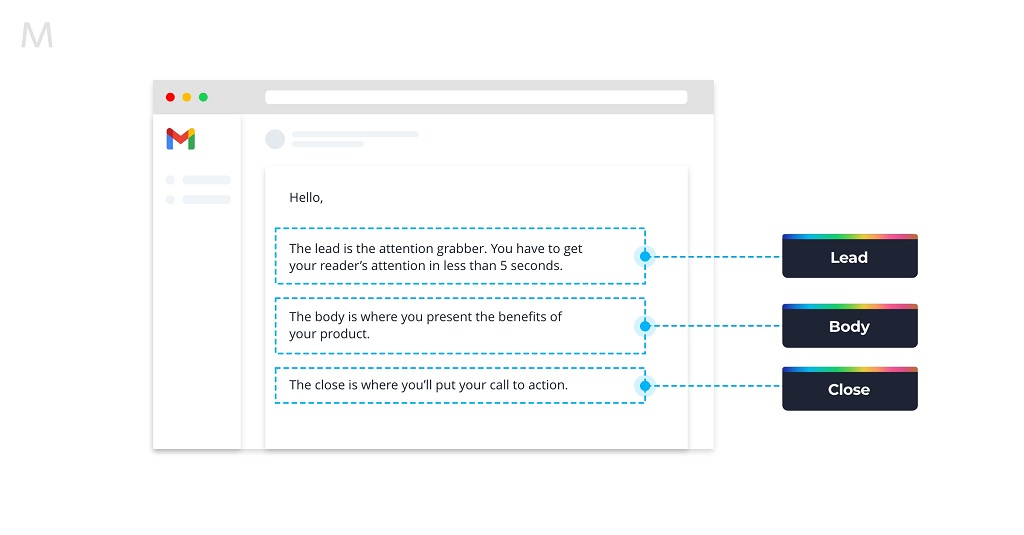
The lead is the attention grabber. You have to get your reader’s attention in less than 5 seconds.
The body is where you present the benefits of your product.
The close is where you’ll put your call to action.
Just because every successful email has 3 sections doesn’t mean that your email has to have paragraphs and paragraphs of copy though.
What you lead with is the most important part of your email copy.
Types of Leads
AWAI, an international organization of professional copywriters, teaches that there are 2 different types of leads: direct and indirect.
Direct leads are useful when you’re dealing with a product that’s mature, or its industry s mature.
Indirect leads are useful when your product is in a brand new industry, or is in an industry that doesn’t have a lot of publicity, or when you’re reaching out to an audience that doesn’t know you.
When making the decision to start off your email using a direct or an indirect lead, the first thing you want to do is ask yourself: “How familiar is my email’s targeted audience with me, my product, or my service?” Remember about The Buyers’ Circles of Trust!
You need to be crystal clear about your audience’s familiarity in the category of product you’re offering.
For example, let’s say you’re offering a brand new recipe for a sandwich. Your recipe may be new, but everybody knows what a sandwich is. So what type of lead are you going to use in your email? A direct lead or an indirect lead?
Direct Leads
Direct leads are best when there’s already a familiarity, a level of trust, and a clear understanding of the value of your type of product.
When you have a product that everybody knows about, you don’t need to waste time educating your audience. So your lead is going to be direct – your email is going to lead right off with one of these three themes.
Direct Lead: Offer
An offer is the most obvious type of direct lead. Everybody knows what a Burger King hamburger is.
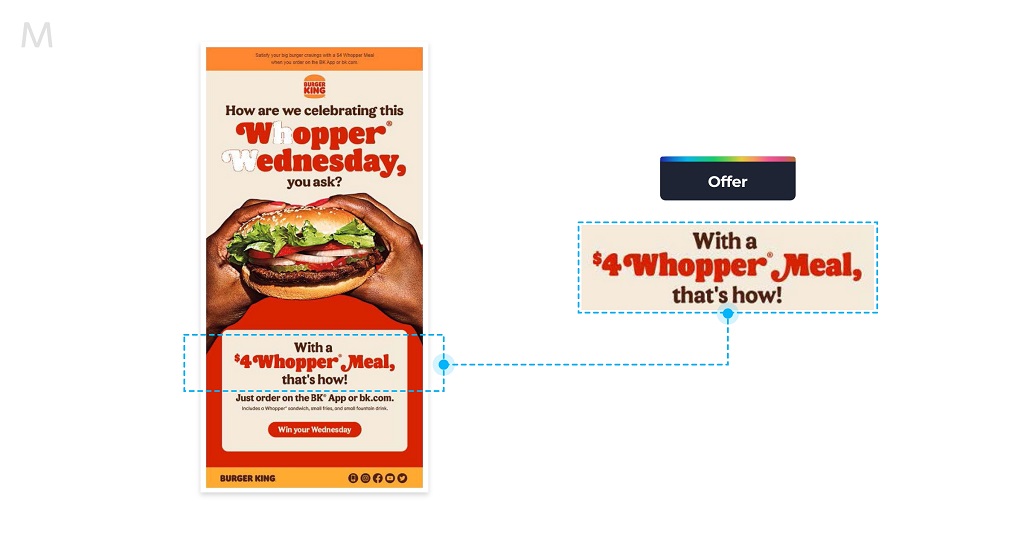
Everybody knows the value proposition of a burger, fries and Coke. Everyone instantly recognizes that $4 for a Whopper meal is a good deal.
Direct Lead: Promise
Take a look at the lead in this email.
Falling asleep – that’s something that everyone knows about. Having trouble falling asleep is also a very familiar problem for many. That’s why a promise works well as a direct lead.
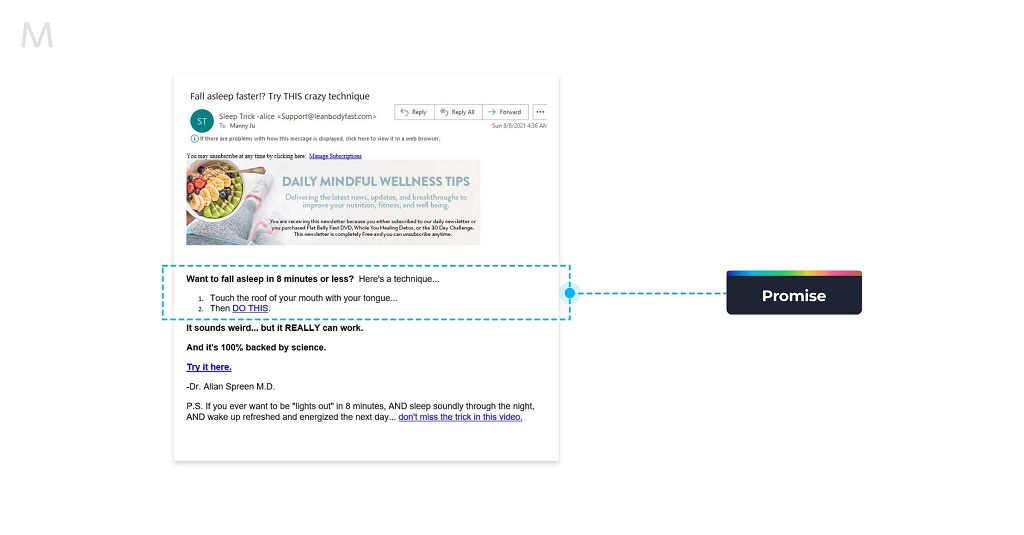
What is the promise? To fall asleep faster. Who doesn’t want that? Lots of people have a hard time getting to sleep at night, so this is a promise that really resonates.
Direct Lead: Problem-Solution
In one of Neil Patel’s emails, you see that he’s using the Problem-Solution type of direct lead.
“No site visitors, no money” – that’s a problem that every website owner understands. There’s no mystery at all!
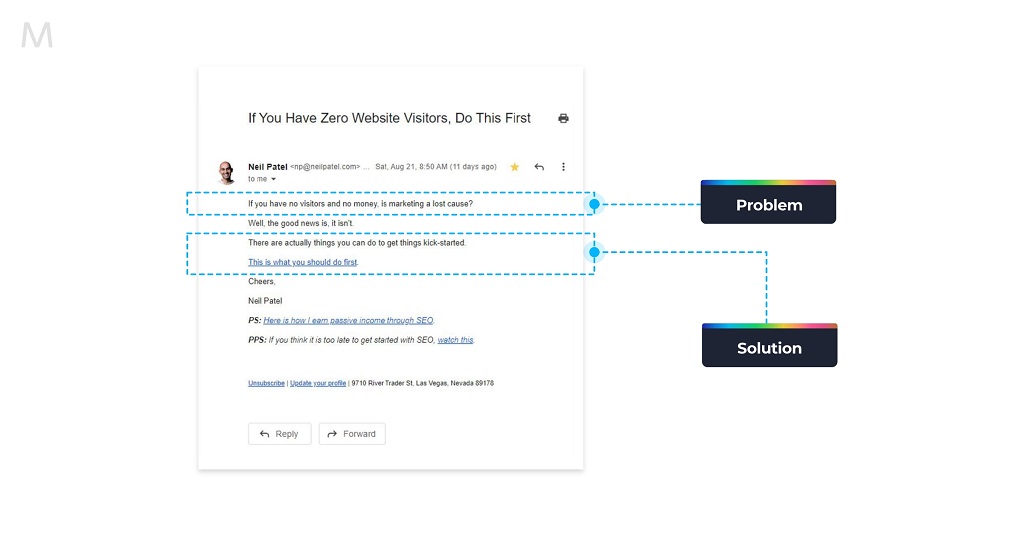
“Things you can do to get things kick-started. This is what you should do first” – that’s the solution that everyone’s looking for.
Indirect Leads
Now, let’s go to the other side of the spectrum and talk about indirect leads.
When do you need to use an indirect lead? You’re going to need to be more indirect when the product category isn’t very well known, and because it’s not well known, its value isn’t well known. Or perhaps your product falls within a category that is very well known within a niche market and now you want to expand your offering into other markets that have very little understanding of your product.
So, to your niche market, which type of lead are you going to use? You’re going to use a direct lead. As you expand into newer markets, you’re going to use an indirect lead.
An indirect lead means that you need to reveal a secret truth that no one knew existed.
O, you’re introducing a brand new “system” to solve a problem that no one’s been able to before.
An indirect lead sometimes needs to make a bold statement. Like email marketing. Not everybody knows what email marketing is. But making a bold statement that for every 1 dollar spent on email marketing, you have the potential to earn back 44 dollars in sales – well that’s an attention-grabber!
The third type of indirect lead is to tell a compelling story in which the benefit of your product is the hero that saves the day.
Indirect Lead: Secrets & Systems
Elizabeth Rider has a healthy recipes newsletter. She also has a series of instructional videos that you can purchase from her site.
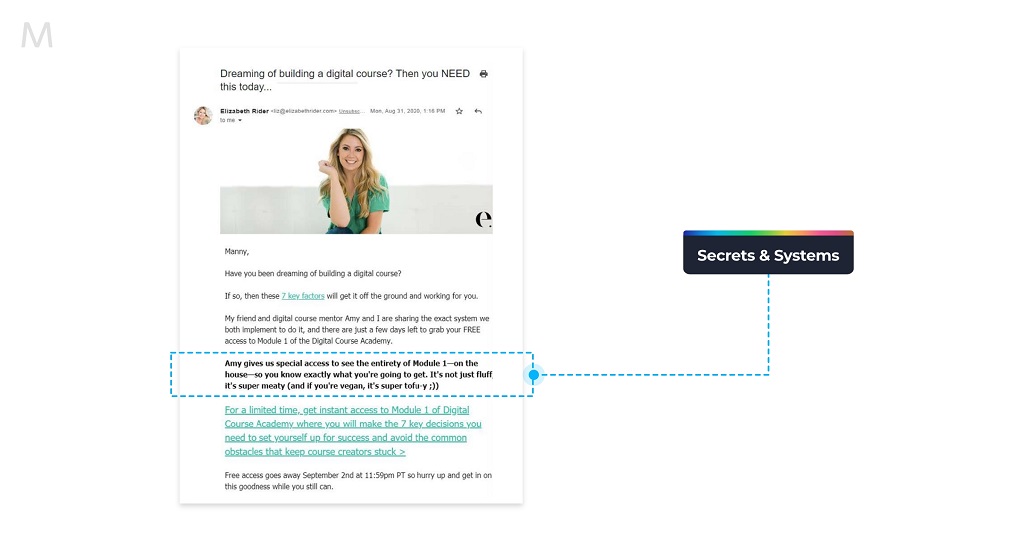
Indirect Lead: Bold Declaration
Troy Ericson’s newsletters are targeted to people who know absolutely nothing about email marketing. A lot of entrepreneurs who are bootstrapping their own startups subscribe to his newsletters to learn.
When a person is just starting out with email marketing, an email list is just a list of addresses that they send emails to. Nothing more, nothing less.
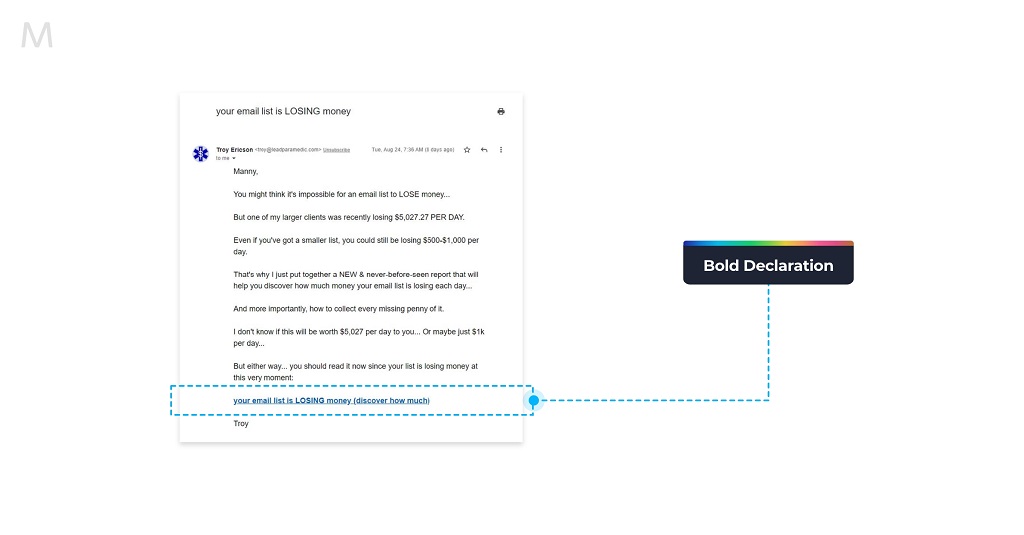
Assigning a monetary value to an email list is totally outside the wheelhouse of someone just starting out. So while not everyone knows what it means to monetize an email list, I guarantee you that everyone knows what it means to lose money.
This email makes a bold declaration that’s easily understandable in the context of a subject matter that isn’t.
Indirect Lead: Story
The last type of highly effective indirect lead is to just tell a story.
Let’s step outside of email for this last one because it’s an absolute classic that we just gotta talk about.
OnStar’s original advertising campaign is one of the best examples of an indirect lead that tells a story.
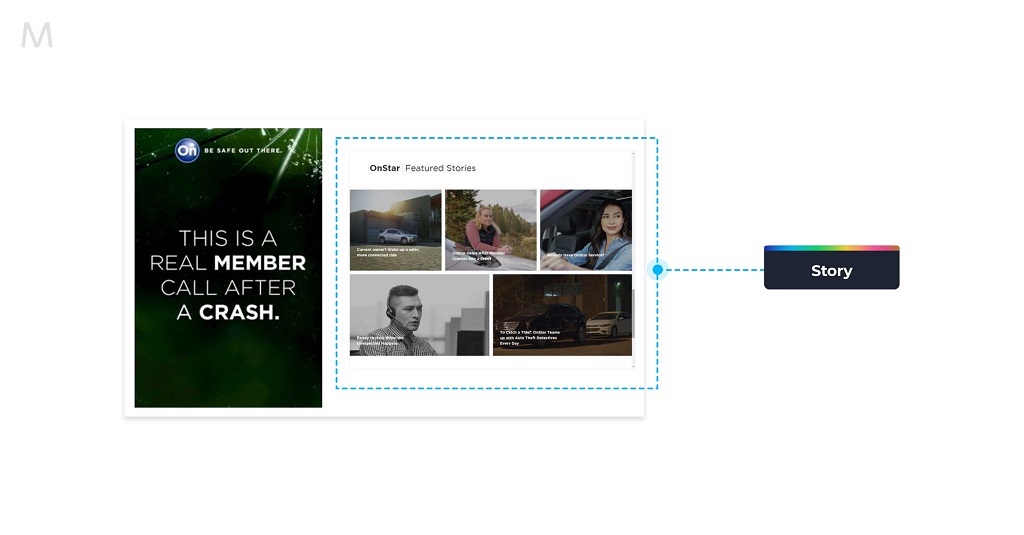
This service first came out over 25 years ago. No one had ever heard of the type of service that OnStar is. Rather than go through all the specific details of the service, their commercials were just recordings of actual calls between a customer in an emergency situation and an OnStar service representative. They let the recorded conversations tell the story of the benefits of OnStar.
You can do that too – use your email to tell a story in which the benefit of your product or your service is the hero that saves the day.
3 Steps to Your Best Emails
Let’s wrap up everything that we’ve discussed. Follow these 3 easy steps and you’ll be consistently sending your best emails.
Step 1: get clear on who you’re sending your email to. Remember The Buyers’ Circles of Trust, and that each circle represents a different level of trust. In your email, don’t ask for a greater level of trust than what the recipient is willing to give.
Step 2: every email you send must have a call to action. Match the call to action with the audience of your email. There are different levels of trust that people have with your brand. The role of email marketing is to move your target audience from one level of trust to the next inner level. Your call to action has to be appropriate for the people who are at the level of trust you’re targeting.
Step 3: follow the structure of every successful email – lead, body, conclusion. Your lead is the most important part of your email. How you write your lead depends upon how familiar your target audience is with your type of product and with your brand.
Happy emailing! Remember – our team is always here to help. We can set you up for success with email automations, journeys, custom triggers and so much more!
Need to chat about your mobile marketing strategy?
More than 10,000 marketers use Maropost to engage with their prospects and customers through emails, SMS, social media and more. We’re here to help you grow your business!
Chat Now

